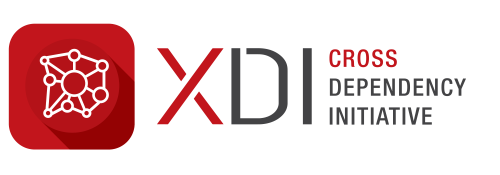
XDI Greater Sydney Case Study
Preparing for the Future
Sydney will experience significant growth over the next 20 years. This growth, combined with other challenges facing the city, will mean intensifying pressure on infrastructure and other resources to provide services for the projected population of 6 million people by 2031. In response to this pressure, the New South Wales State Government and the City of Sydney have initiated XDI-Sydney.
XDI-Sydney is a large scale, multi-utility analysis. Using the XDI big-data cloud servers, the project aims to quantify integrated risk and avoid potential failures of critical infrastructure services from extreme weather and climate change. XDI Sydney will include critical public and private infrastructure in power, water, roads, rail and telecommunications. XDI-Sydney harnesses the big data capabilities of the cloud-based server. The project encompasses approximately 4 million individual assets across 6 infrastructure types.
XDI-Sydney enables asset managers to:
- identify the interdependencies within their critical infrastructure networks
- quantify the costs and customer impacts and
- finds opportunities for collaborative adaptation
Application to a global scale city
XDI-Sydney focuses on the geographical area of Metro (greater) Sydney, but includes upstream and downstream assets outside of this area that are essential to the proper functioning of the city, such as water catchment areas and power supply lines. Under the legally secure umbrella of the State Government, public and private sector owners of critical infrastructure provide data for cross analysis with other utilities’ information. All parties make financial contributions to the shared project and extract value through finding partners with shared risks who can collaborate and cost-share on specific adaptation actions.

Cross Dependent Impact and Resilience
The XDI Platform provides computationally detailed diagnostics of hazards, exposure and vulnerability across a complex system evolving with time. As an organisation changes, data can be updated; assets can be added or removed. Climate change projections are also updated as they evolve. Participants contribute to specifying the archetypes, hazards, failure models and output KPIs to be used, ensuring the analysis provides user focused results.
XDI-Sydney provides reports to participants on their own organisation’s risks and, importantly, where they have risks caused by a third party. In this way, asset owners can see which third-party risks will affect their own system and, equally, the consequences of their own failure risks to other critical infrastructure. Interdependent risks are quantified both financially and in non-financial KPIs such as the number of customers affected by flood risk. These are projected forward annually for up to 100 years.
The XDI approach facilitates discussions to understand interdependency and then explore opportunities for ‘collaborative adaptation’.
Collaborative Adaptation
Collaborative Adaptation involves two or more parties combining resources to reduce the overall vulnerability of an infrastructure system, as opposed to each party seeking to protect their own assets with no knowledge of the actions of others. It’s the most financially efficient way.
Here’s a hypothetical example:
The XDI team have identified that a large number of water assets are dependent upon an electrical sub-station that is prone to flooding, creating the potential for a loss of service to a large number of customers, including the water utility. One way to mitigate this risk is to raise the sub-station floor heights; but that solution will have a marginal Net Present Value compared to managing the risk with insurance. Meanwhile, the local government is considering upgrading storm-water drains in the area to lower the flood risk to residential properties, however the value proposition for them is also marginal.
The XDI Platform can calculate the risk costs to all three organisations (water, power and local government), currently and with future climate change exacerbation. With these figures to hand, managers can determine adaptation measures and timing that most cost effectively mitigate risk. In this example, our model might show that the most financially cost effective solution is to upgrade the drainage in 2020. In collaborative adaptation, the power and electricity company contribute to the cost of the local governments’ upgrades to the storm-water drainage. Each organisation makes considerable savings compared to unilaterally adapting their own assets.
Securing Data and Sharing Results
Effective legal arrangements are critical to enable collaborative adaptation across sectors and utilities. XDI-Sydney participants have adopted a collaborative agreement ensuring each organisation retains complete control of their data and the resulting analysis. Asset information and analysis is completely secure for each user and is only shared with other participants by permission. The NSW Government underpins this arrangement by providing legal and technical structures and oversight. Software and data hosting are run on high-security cloud servers based in the country of the project to avoid critical infrastructure data crossing international boundaries.
